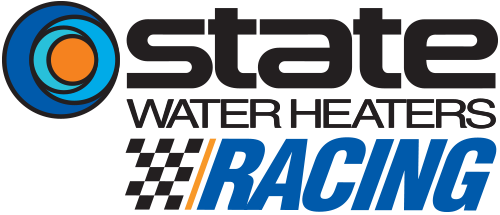 Photo: Stewart-Haas Racing
Photo: Stewart-Haas Racing
KANNAPOLIS, North Carolina (May 29, 2017) – Kurt Busch, driver of the No. 41 Haas Automation/Monster Energy Ford Fusion for Stewart-Haas Racing (SHR), will approach this weekend’s AAA 400 Drive for Autism with two agendas. While his immediate focus will be on the task at hand, getting as good a finish as possible, he’ll also approach the race as a test session for when the Monster Energy NASCAR Cup Series returns to the concrete mile oval in October.
The June race at Dover is the 13th event of 26 that make up the regular season of NASCAR’s 2017 schedule. While this race pays the same amount of points as the rest of those races, it carries with it some additional importance for Busch. Having already won a race this year, the season-opening Daytona 500 at Daytona (Fla.) International Speedway, Busch knows that his presence in the Monster Energy NASCAR Cup Series playoffs is all but guaranteed.
That’s why Busch will approach the weekend thinking about October and Dover’s significance in the 10-race playoff. As the third race in the opening round, Dover serves as the first elimination event. If Busch has solid outings in the first two playoff races at Chicagoland Speedway in Joliet, Illinois and at New Hampshire Motor Speedway in Loudon, he can head to Dover with a little less pressure. Should he need a solid finish when he comes back to Dover, a racetrack that has given him struggles over the years, he’ll hope that some of the notebook he and his Tony Gibson-led team build this weekend can give them what they need to find success.
Dover is a high-banked, concrete, mile oval with a penchant for chewing up racecars and veteran drivers alike. It can be one of the more taxing racetracks on drivers and equipment with its abrasive surface and high banking. The “Monster Mile,” as it is affectionately known, is an appropriate nickname considering the speeds carried through its high banks and short straightaways that allow little to no room for error.
Busch has conquered Dover just once in his career, in October 2011. He pulled away from Jimmie Johnson on a pair of late-race restarts to earn his 24th NASCAR Cup Series victory. Otherwise, it’s been a struggle. He’s earned just one top-five finish since then – in this race last year when he was able to overcome a tough day of obstacles to record his seventh top-five at the concrete oval.
Busch also owns nine top-10 finishes in 33 starts. While he’ll look to earn both his second career Dover victory and second of 2017 Sunday, it would not be a disappointment to simply survive at one of the most difficult racetracks on the circuit and get a strong baseline for October. But he knows that scoring the win would also give him and his No. 41 team another five valuable bonus points for the NASCAR Cup Series playoffs.
KURT BUSCH, Driver of the No. 41 Haas Automation/Monster Energy Ford Fusion for Stewart-Haas Racing:
What is it about Dover that makes it such a challenging racetrack, and what do you have to do be successful there?
“The tough thing about Dover is things happen so quickly. At any moment at any time, somebody can spin in front of you or you can lose control off the corners and you are going to wreck. There is no real forgiveness about Dover. That is what makes it tough. To be good there, you have to be good on corner exit. The track really rubbers in so you can see the concrete change to black as the weekend progresses. On corner exit, you get really tight or really loose. The time I won there, I could almost hold it wide open on corner exit. That is what you’ve got to have.”
Do you feel it has earned its nickname?
“It’s called the Monster Mile for a reason – the track can chew up cars and spit them out. It’s because of those tough transitions into the corners with the high banking and even the high-banked straightaways. It’s tough to do that sharp of a turn on a mile racetrack. It’s like you literally jump down into the corner and then jump back up out of the corner onto the straightaway, and so those points of the track are the toughest part – the transition from straightaway to corner. It’s a fun track to drive.”
How physically demanding of a racetrack is Dover?
“You’re just on edge there and, the speed that you have to carry on corner exit, you’re right there at the wall every corner exit and you do it 800 times with 400 laps and two corner exits. That makes it tough. This race will wear you out, for sure, and you have to pace yourself.”
What’s it like heading off into turn one at Dover? Do you focus more on corner entry to exit there?
“The drop into turn one is definitely tough. It’s one of the biggest ones we encounter on the circuit. You have to have the car nice and soft when it lands, but then the suspension has to be rigid enough to not allow the car to hit too hard. It’s a nice balance that you have to find at Dover to be successful. Most importantly, though, it is getting that corner exit when the track rubbers in because you can’t get on the tight side.”
Things seem to happen very fast at Dover. Do you approach it like a short track or more like a superspeedway?
“It is more like a mile-and-a-half track. It’s an intermediate-style track even though the lap times are quick and things happen very quickly like they do at short tracks. It has a mile-and-a-half tendency where you get in that rhythm and then you have the aero that you are battling there, as well.”

